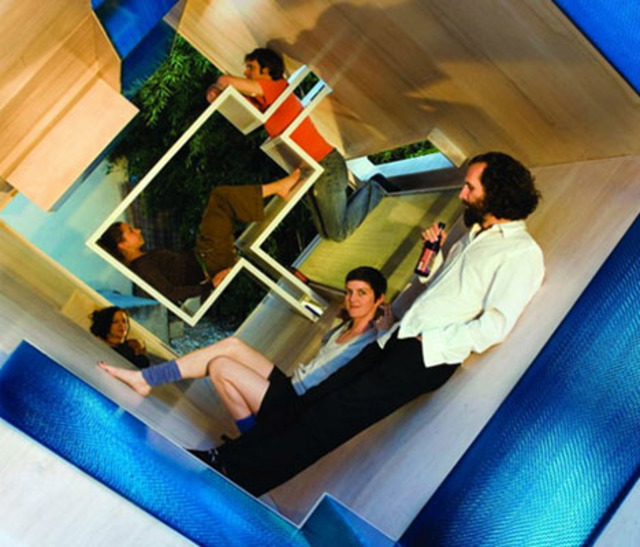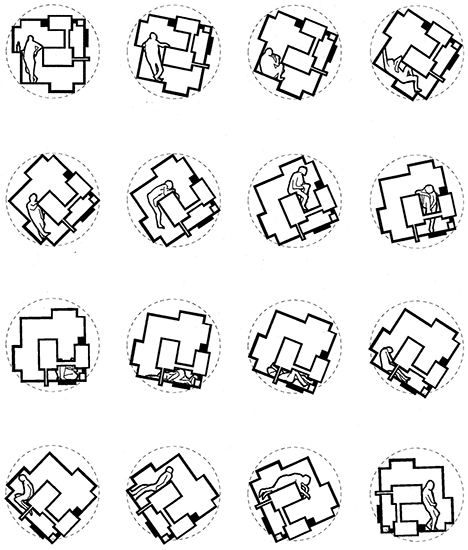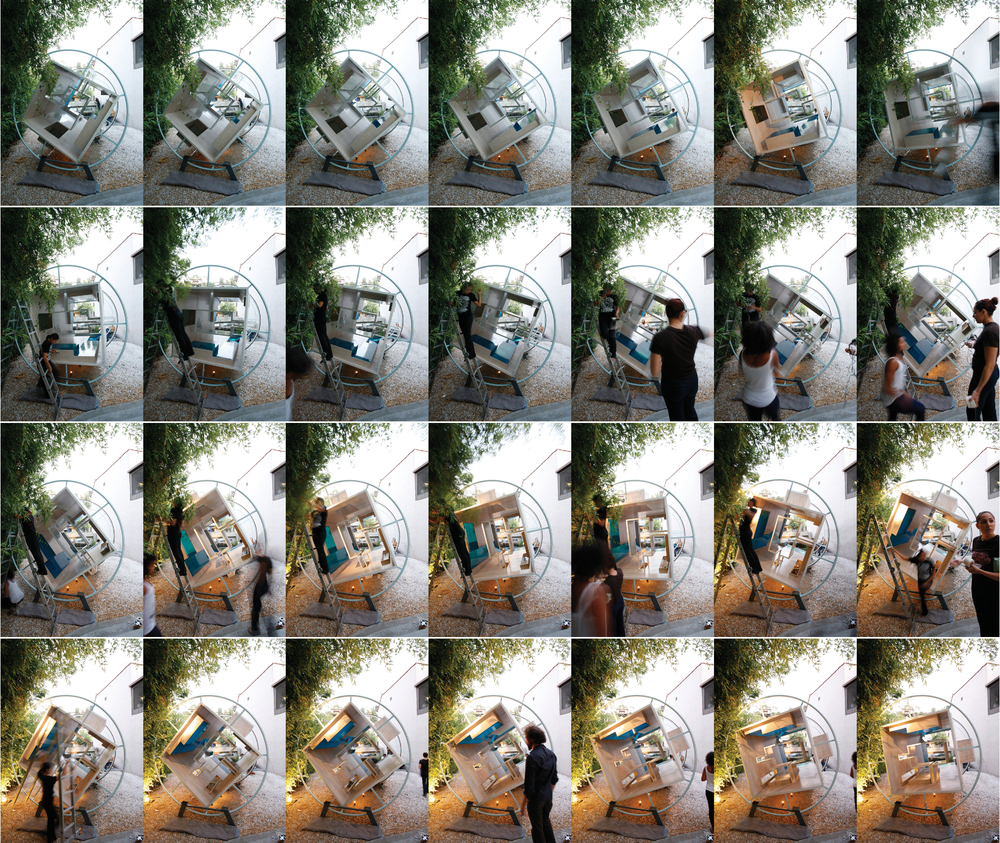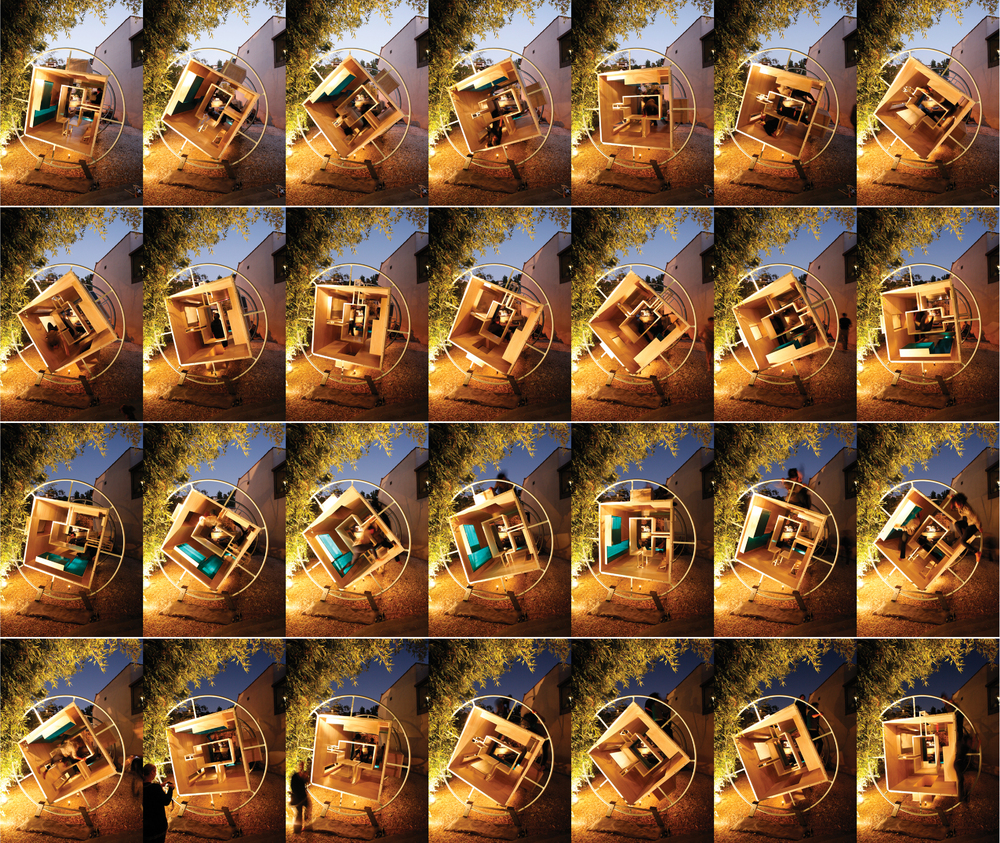Spin Space 360-Degree Room
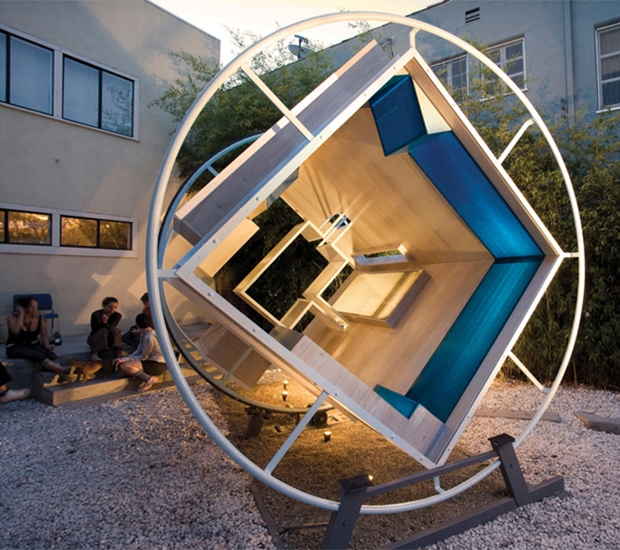
Gravity is a possible, but not necessary, starting point for the design of every structure and object we occupy or use. What if we stripped away this assumption and began shaping space that can work from any perspective and at any angle? Bureau Spectacular created this incredible installation called “Phalanstery Module” that turns what we know about up and down sideways, spinning it around at increments to create a fully circular experience of space.
It completes a full rotation once per hour, forcing occupants to keep up or get out. Floors have to work as walls, ceilings as floors, and any built-ins serve some potential purpose with each incremental turn. While not the same as a true experience of outer space, it starts to suggest ways that designers could work with otherworldly problems … and perhaps add new dimensions to terrestrial design projects, too.
“This installation grown from the hypothesizes that in zero-gravity, one can rotate in architecture and treat all surfaces as plans – i.e., walls, ceilings, and floors. Without gravity, all surfaces can be occupied. The distinctions between orthographic drawings become obsolete. To this end, the installation is a structure rotating once an hour – at the same rate as a clock. Every 15 minutes, one of the surfaces become parallel to the ground.”
“In the middle of every 7.5-minute conversation, two people are bound to collide. Architectural program and activities become overpowered by the instinctive interpretations of our bodies against measurable dimensions. This installation is derived from a comic story written and illustrated by Jimenez about a group of citizens riding a Noah’s Ark Spaceship to a new planet far away.”
“BUREAU SPECTACULAR imagines other worlds and engages the design of architecture through telling stories. Beautiful stories about character development, relationships, curiosities and attitudes; absurd stories about fake realities that invite enticing possibilities. The stories conflate design, representation, theory, criticism, history and taste into cartoon pages. These cartoon narratives swerve into the physical world through architectural installations, models and small buildings.”





